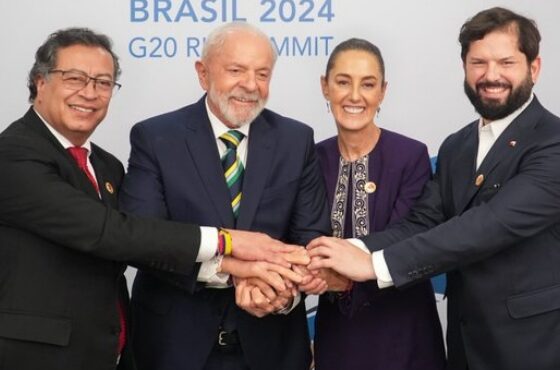
Even last year we were still talking about the political wave that had painted the continent red. In Mexico, Guatemala, Honduras, Colombia, Chile, Brazil, Argentina, Ecuador, Peru and Bolivia, left-wing governments were installed through elections in a process that spanned almost 15 years. But for some time now the phenomenon has lost steam and in many places it has been reversed. In the last four countries (Argentina, Ecuador, Peru and Bolivia) citizens have voted in favor of conservative candidates, putting an end, at least for the moment, to the experiences of popular governments. In Colombia and Chile they still persist, in the hands of Petro and Boric, respectively, but they end their term with worrying levels of approval for their cause. In Brazil itself, Lula da Silva was able to regain power two years ago, after which his popularity began to decline; Last summer he seemed destined for a free fall, but paradoxically Trump came to his rescue involuntarily. Many Brazilians have closed ranks with their government due to the abusive threats directed against the country, but it would seem to be a momentary oxygen tank.
What factors explain this pendulum swing? It is understood that the emergence of popular leftist governments was the result of growing dissatisfaction among the impoverished masses, left behind by a globalization that favored prosperous groups. López Obrador, Lula da Silva, Rafael Correa, Evo Morales, the Kirshners, Petro, Boric and equivalents were able to convert the dissatisfaction of so many into votes. Once in power, each with its own characteristics, resorted to a battery of actions to achieve a better distribution of income and an increase in public spending in favor of the poor.
Some were more successful than others, although it would have to be said that in political terms only López Obrador managed to finish with greater popularity and strength than when he started. The rest suffered or still suffer a process of wear and tear that explains the emergence of alternations that are increasingly antagonistic to their project.
What needs to be explained is why in many of these countries the majorities that were receiving attention from popular governments that they did not have before ended up voting for conservative candidates.
The explanation could be the resulting mixture of several factors. One, “the diminishing returns” of popular public policies. That is to say, the first actions have an immediate and enlightening effect: the distribution of subsidies or pensions, the increase in minimum wages, the end of abusive practices. The initial impulse generates an improvement in the condition of the poor. Statistically, it takes millions of people out of misery. But then two things happen. First, at a certain point the government runs into budget limits to expand this aid significantly. Obtaining financing from debt, the manufacture of banknotes or increased taxes is a palliative that allows us to advance a little further, but causes unfavorable economic effects. Inflation, capital outflow, depreciation and stagnation have been a recurring scourge in several of these countries. Many citizens, even among the poorest sectors, perceive that the flow has stagnated and instead their living conditions are deteriorating due to inflation and stagnation.
And second, for most left-wing governments, the divorce of the two essential variables: distribution and growth remains an unresolved problem. That is, a better distribution of wealth often becomes an unfavorable climate for investment and job creation to lift people out of poverty on a sustained basis. In most cases, popular governments have managed to improve distribution, but with a pie that does not grow. Governments enter a vicious circle of exhaustion, unable to sustain the distribution or achieving it at increasingly high political and financial costs.
This becomes fuel for the emergence of goldfinch and opportunistic candidates capable of harvesting fear, uncertainty and frustrated expectations. Regarding Trump, columnist David Brooks pointed out in The New York Times a series of reasons to explain the success of this “reverse” populist discourse, against governments that sought the benefit of the majorities. They robbed the left of its rage and transformative energy, Brooks says. They are anti-globalists, they criticize traditional political elites, they consider themselves victims of the system, they come to contradict, to question what is politically correct. The Trumpist or Bolsonaro hordes that broke into the Capitol or the Palace of Justice in Brasilia could well sign the slogan “to hell with the institutions.” All of the above mixed with the strident and visceral climate produced by social networks, partly spontaneously and partly through sophisticated processes financed by the portfolio of conservative sectors.
Or perhaps the explanation lies elsewhere. This week Martín Caparrós wrote about it: We were all wrong when we assumed that Milei was going to lose these elections. “He won them by a landslide.” The country we believe we are part of is an invention. There are millions of people who live in different places, different emergencies, different houses, different lives. One believes, Caparrós says, that Argentines are not going to put up with a guy who starves them, who always seems like a bad joke, who humiliates himself before Trump. Only to find out that people decided to go for all of it. Democracy at least serves that purpose, he adds, “to show you that you were perfectly wrong, that certain things that seemed intolerable to you are very tolerated by a good part of your compatriots, that what mattered so much to you did not matter much to them.”
Choose your explanation.
@jorgezepedap

